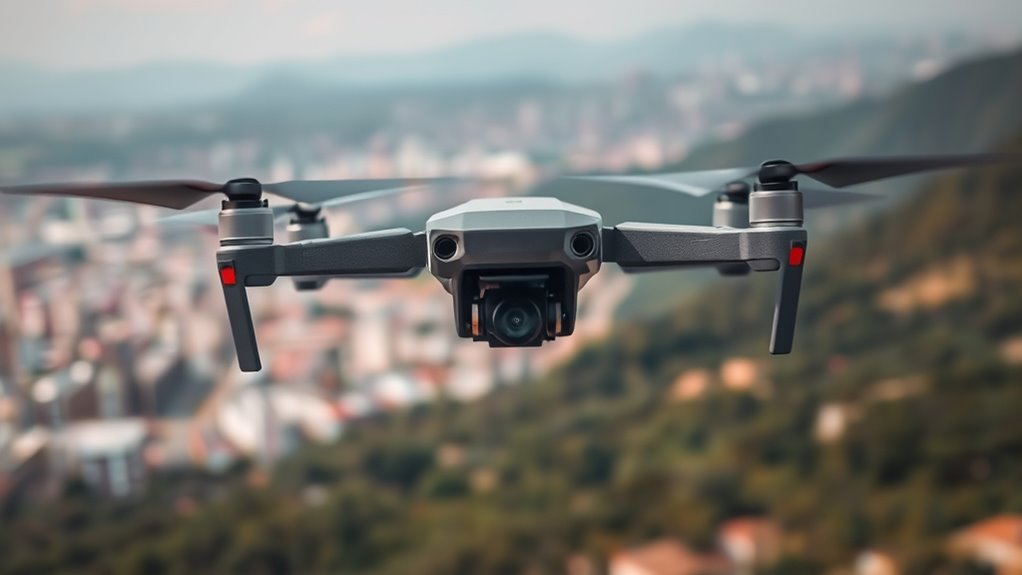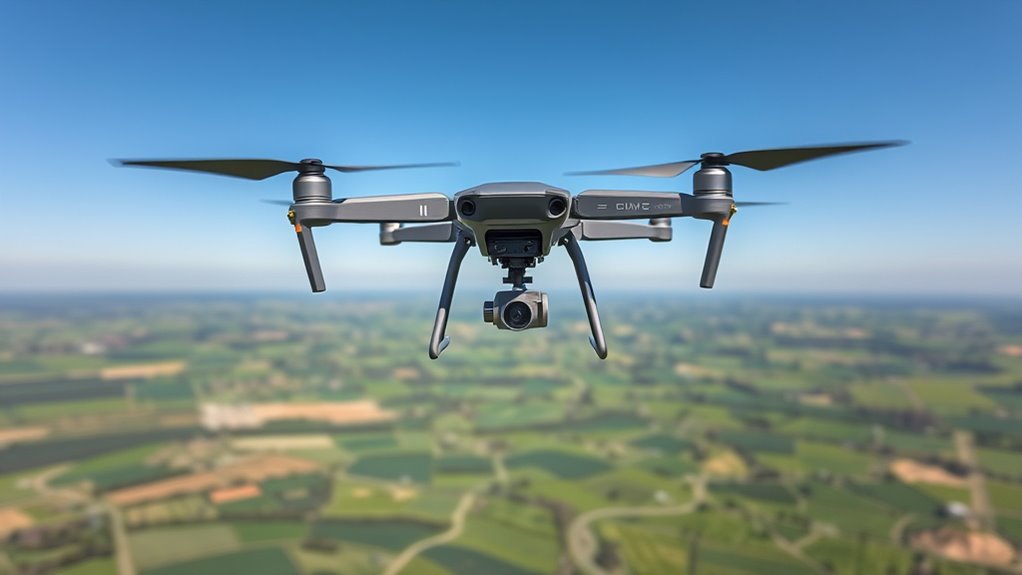Headless mode in drones allows you to control the aircraft based on your position instead of its orientation. This simplifies navigation, making it easier, especially for beginners. You won’t have to worry about which way the drone is facing; commands are consistent relative to you. However, this mode can limit your awareness of the drone’s surroundings and may hinder advanced maneuvers. Understanding its implications can enhance your piloting experience greatly. There’s more to explore about effective usage.
Understanding Headless Mode

Headless mode in drones serves as an essential feature for enhancing user control and navigation. It simplifies the piloting experience by eliminating the need to determine the drone’s orientation relative to your position. The headless definition indicates that regardless of where the drone’s front is facing, the controls remain consistent. When you push the joystick forward, the drone moves away from you, and pulling it back brings it closer. This functionality is particularly beneficial for beginners, as it reduces the cognitive load during flight. By allowing intuitive drone navigation, headless mode grants users the freedom to explore the skies without the distraction of orientation confusion. Ultimately, it empowers you to focus on enjoying the flight rather than grappling with complex controls.
How Headless Mode Works

When engaging headless mode, the drone’s control system establishes a fixed reference point, typically the pilot’s location. This allows you to control the drone based on its relation to you, rather than its current orientation. In this mode, the drone’s software adjusts its response to your commands, ensuring that forward, backward, left, and right correspond to your perspective. By eliminating the need to regard drone orientation, you gain flight stability and ease of navigation, especially in complex environments. The technology relies on sensors to track the drone’s position and maintain a consistent reference frame. This means you can focus on the experience, liberating you from the constraints of traditional flight controls.
Advantages of Using Headless Mode

One significant advantage of using headless mode is the simplification of flight control, which particularly benefits novice pilots. By eliminating the need to orient the drone based on its physical direction, you enhance your user experience, making it more intuitive. This mode allows beginners to focus on the joy of flying rather than getting confused by directional controls. Additionally, the drone’s intelligent flight modes can further assist new pilots by allowing them to explore various flying styles safely. The use of auto-stabilization technology also contributes to a smoother and more controlled flying experience.
| Feature | Beginner Benefits | User Experience |
|---|---|---|
| Simplified Controls | Easier to learn and master | Reduced cognitive load |
| Increased Confidence | Less chance of crashing | Greater enjoyment |
| Enhanced Focus | More time on flying | Improved engagement |
| Versatile Usage | Suitable for various terrains | More adaptable flying |
In essence, headless mode fosters a liberating flying experience.
Limitations of Headless Mode
While headless mode simplifies flight for beginners, it has notable limitations that experienced pilots should consider. This mode can lead to safety concerns and navigation challenges, particularly in complex environments. Here are some significant points to keep in mind:
- Reduced orientation awareness: You might lose track of the drone’s actual position relative to obstacles.
- Limited response to wind: Headless mode doesn’t account for wind direction, affecting flight stability.
- Difficulty in advanced maneuvers: Accomplished pilots may find it restrictive for complex aerial tricks.
- Over-reliance on technology: Pilots might neglect essential flying skills, leading to potential mishaps.
Understanding these limitations is vital for maximizing your drone’s capabilities while maintaining control and safety.
Tips for Using Headless Mode Effectively
Although headless mode can simplify drone operation, using it effectively requires attention to specific strategies. First, familiarize yourself with the headless mode advantages, as this feature allows for easier navigation without worrying about the drone’s orientation. For beginner drone tips, always start in a spacious area to minimize obstacles and guarantee safe practice. Before activating headless mode, make sure the drone is facing you; this alignment is vital for accurate control. When maneuvering, maintain a steady hand on the controls to avoid erratic movements. Finally, periodically switch between headless and normal modes to strengthen your spatial awareness and improve overall piloting skills. Mastering these techniques will enhance your flying experience and boost your confidence in using headless mode effectively.
Frequently Asked Questions
Can Headless Mode Be Used in All Drone Models?
Not all drone models support headless mode. While it offers benefits like simplified controls, it also has limitations such as reduced precision and reliance on GPS. Always check your drone’s specifications before attempting to use it.
Does Headless Mode Affect Battery Life?
Headless mode doesn’t inherently affect battery performance. However, your flight efficiency might vary based on how you utilize the feature. Efficient control can lead to longer flights, while poor management may drain your battery quicker.
How Do I Disable Headless Mode?
Imagine you’re flying a drone in a park. To disable headless mode, access the settings through your remote or app, then toggle off the headless mode option, restoring standard control and enhancing your flying experience.
Is Headless Mode Suitable for Beginners Only?
Headless mode offers beginner advantages like simplified control, making it easier to fly. However, its limitations—such as reduced spatial awareness—can hinder advanced pilot skills. Ultimately, it’s not exclusively suited for beginners; experienced users may also benefit.
Can Headless Mode Be Used Outdoors?
Yes, headless mode can be used outdoors, but consider outdoor conditions like wind resistance. It may affect flying distance, potentially limiting your drone’s range. Always make sure the environment is suitable for peak performance and control.

